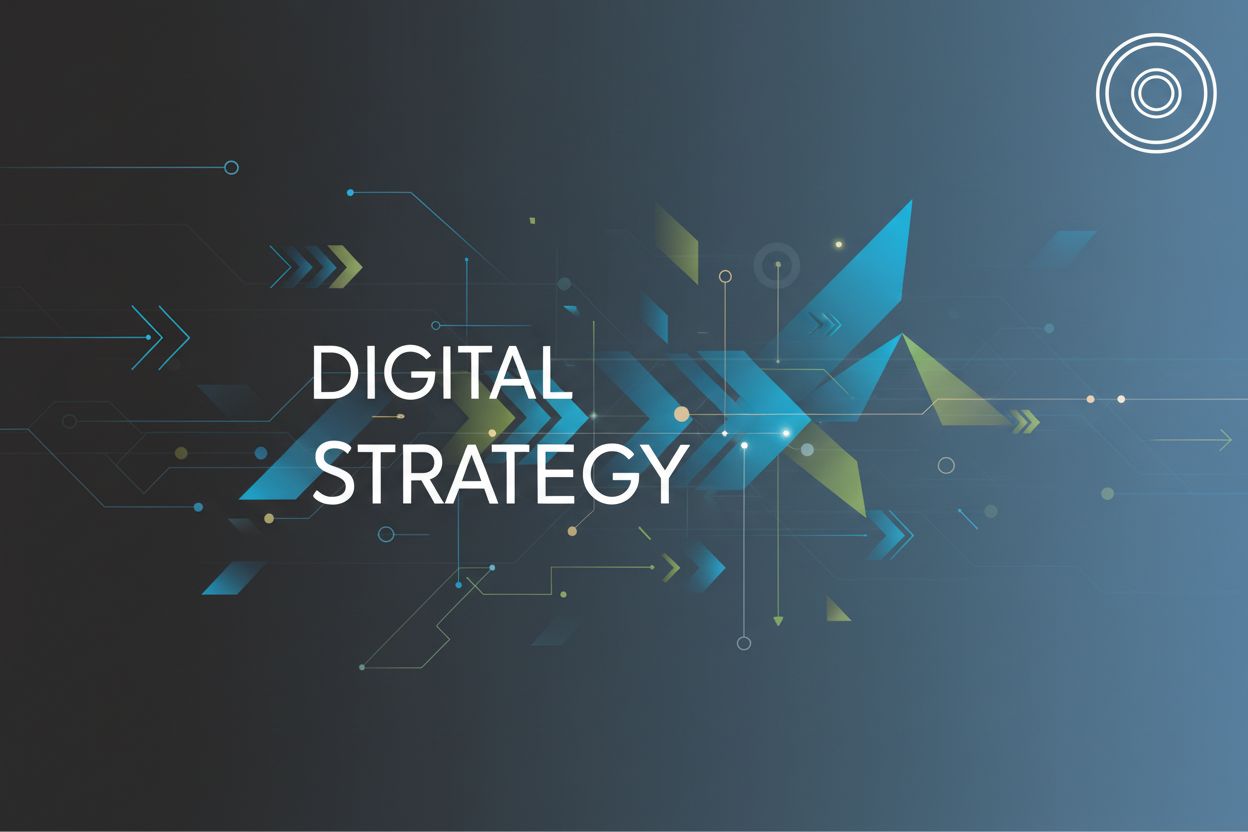Effective Native Advertising Approaches for Marketers
TL;DR
Understanding Native Advertising in Today's Digital Landscape
Did you know that most people can't even tell the difference between an ad and regular content these days? (Online experiment finds that less than 1 in 10 people can tell ...) It's kinda wild, right? That's where native advertising comes in, and why it's such a big deal.
Native advertising? Basically, it's ads that blend in so well, they don't feel like ads. Think of it as camouflage for marketing – it's gotta match its surroundings.
- It's all about fitting in. Native ads take on the look and feel of the platform they're on. So, on Instagram, it's a sponsored post that looks just like your friend's vacation pics. On a news site, it's an article that seems like any other piece of journalism.
- Fighting ad fatigue is real. (Creative Fatigue Is Real — What's Your Go-To Strategy to Beat It in ...) People are so over traditional ads. Banners? Skipped. Pop-ups? Closed immediately. Native advertising sneaks past those defenses.
- Trust is everything. Because native ads aren't as intrusive, they can actually build trust. It's like, "Hey, this brand isn't yelling at me – maybe they're worth listening to."
- It's part of the bigger picture. Native ads aren't a standalone thing; they're part of a whole digital marketing strategy. It's gotta fit in your overall plan to, you know, actually work. And to understand how we got here, it's helpful to look back a bit.
It's not like this stuff just popped up overnight.
- Advertorials were the OG native ads. (Native advertising and advertorials: Apples and not-quite-apples) Remember those "special advertising sections" in magazines? Yeah, that's where it started.
- Nobody wants to be interrupted. We're moving away from in-your-face marketing. People want content that's actually useful or entertaining.
- Mobile changed everything. Native ads are perfect for phones because they don't disrupt the user experience on smaller screens.
- Real-world examples are key. Gotta see what works, right?
So, how does this all fit into the big, scary world of digital transformation?
- It helps businesses move online. Native advertising can drive engagement and get people clicking on your stuff, which is kinda the whole point of being online.
- It's not just slapping ads everywhere. You gotta think about how native ads fit into your entire digital strategy.
- Data is your friend. You can track how well your native ads are doing and tweak them to get better results.
- Tech makes it easier. There are tools out there that can help you create and manage your native ad campaigns.
Native advertising is a key piece of the digital puzzle.
Crafting Engaging and Effective Native Ads
Alright, so you wanna make native ads that don't suck, huh? It's more than just slapping a logo on something and hoping for the best. It's about creating stuff people actually wanna see.
- Know thy audience. Like, really know them. You can't just guess who you're talking to. Dive deep into their world. For example, if you're a healthcare company targeting new parents, don't just show baby products. Think about addressing their anxieties about sleep deprivation or finding reliable childcare. It's about understanding their actual needs, not just what you think they need.
- It's all about value, baby! Nobody clicks on an ad just because it exists. Your native ad needs to offer something real – useful info, a good laugh, a solution to a problem. Imagine a financial services firm creating a sponsored article on a personal finance blog about "5 Common Money Mistakes Millennials Make." That's way more engaging than a banner ad screaming "Open an Account!"
- Blend, don't blind. The best native ads are the ones you barely notice are ads. They fit seamlessly into the platform's existing content. Think about how buzzfeed does sponsored content. It looks and feels exactly like a regular buzzfeed listicle, but it's promoting a specific product or service.
- Don't forget the SEO love. Just because it's native doesn't mean it gets a free pass from search engines. Use those seo copywriting techniques to make sure your ad gets seen. What's the point of crafting this amazing ad if no one ever sees it because it is not optimized for search engines? For instance, for sponsored articles, research relevant keywords your audience is searching for and naturally weave them into the content. For native ad creatives, ensure your headlines and descriptions are clear and keyword-rich.
Sometimes, seeing is believing. Here's a quick diagram to illustrate how native ads should integrate:
See? It's all about that seamless integration.
Let's say you're a software company. Instead of a boring product demo, create a sponsored blog post on a tech news site about "The Future of Remote Work and the Tools That Will Get You There." Subtly weave in your software as one of those tools. See how that's way less "salesy?"
Remember, it's not about tricking people, it's about providing value in a way that feels natural.
Measuring and Optimizing Native Advertising Campaigns
So, you've launched your native advertising campaign – awesome! But how do you know if it's actually working? Turns out, just crossing your fingers isn't a valid strategy. We gotta measure this stuff, right?
Think of KPIs as your campaign's vital signs. They tell you what's healthy and what needs a little... tweaking.
- Click-through rate (ctr): This is pretty straightforward, it's just the percentage of people who see your ad and actually click on it. A low ctr? It might mean your headline isn't catchy enough, or the image isn't grabbing attention.
- Engagement rate: Clicks are great, but engagement is where it's at. This includes likes, shares, comments – all those interactions that show people are actually interested. A healthcare provider might track how many people share their sponsored article on "5 Tips for a Healthier Heart" or a retail store might track likes on their instagram posts.
- Conversion rate: This is the big one – the percentage of users who complete a desired action after clicking on your ad. Did they sign up for a newsletter? Make a purchase? Download a whitepaper? According to Hubspot, conversion rate is a key indicator of marketing success.
- Return on ad spend (roas): Ultimately, you need to know if you're making money. roas tells you how much revenue you're generating for every dollar you spend on native advertising. If you're spending more than you're making, Houston, we have a problem.
Alright, now how do we actually track all this stuff? Luckily, there's no shortage of tools.
- Google analytics: A classic for a reason. It can track website traffic, user behavior, and conversions from your native ads. You can see where your visitors are coming from and what they're doing on your site.
- Social media analytics platforms: If you're running native ads on social media (like sponsored posts), these platforms will give you detailed insights into engagement and reach.
- Native advertising platforms: Many native ad platforms (like Taboola or Outbrain) have their own built-in analytics dashboards. these platforms providing detailed campaign metrics and reporting, making it easier than ever to see where your money is going and what you're getting back.
- Martech solutions: There are a ton of marketing technology solutions out there that can help automate and optimize your native advertising campaigns, but don't rush into it. These solutions can range from CRM systems to advanced analytics platforms and ad management tools. It's wise to avoid rushing because implementing new tech can be costly, complex, and require significant integration with your existing systems.
Okay, so you have your data. Now what? Time to start tweaking!
- Testing different headlines, images, and ad copy: A/B testing is your best friend. Try out different versions of your ads to see what resonates best with your audience. Does a funny headline work better than a serious one? Does a picture of a person outperform a product shot?
- Optimizing ad placement: Where your ad appears can make a huge difference. Make sure your native ads are visible and relevant to the content around them.
- Refining targeting parameters: Are you reaching the right people? If your targeting is off, you're wasting money showing your ads to people who will never be interested.
- Analyzing data and making continuous improvements: This isn't a one-and-done thing. Keep an eye on your data and make adjustments as needed.
By consistently measuring and optimizing your native advertising campaigns, you can make sure you're getting the best possible results.
Ethical Considerations and Best Practices
Okay, so, native advertising can be super effective, but let's be real – it's easy to cross a line. Nobody wants to feel tricked, right? It is important to keep things above board.
Labeling is everything: Gotta make it obvious that it's an ad, not just some random piece of content. Think "Sponsored" or "Advertisement" – no sneaky stuff. Like, if a financial blog has a "sponsored" article by an investment firm, it needs to be crystal clear that it's an ad.
Disclose those relationships: If the brand and publisher are, like, BFFs, say so! It's just honest.
Stay within the lines: Advertising guidelines aren't just suggestions; they're rules.
Relevance matters: The ad should actually fit with the content around it. Like, don't show me car ads on a vegan cooking blog, yeah? And to ensure relevance and avoid misleading users, steer clear of clickbait tactics.
No Clickbait! Seriously, nobody likes that.
Respect User Privacy: That data is a big responsibility. This means being transparent about data collection, only collecting what's necessary (data minimization), and obtaining clear consent from users. It's also crucial to adhere to privacy regulations like GDPR and CCPA where applicable.
Doing it right builds trust.
The Future of Native Advertising
Okay, so, what's the deal with native advertising going forward? Honestly- it's gonna be wild. We're not just talking about sponsored posts anymore, we're talking about entire experiences.
ai is a game changer. Imagine ads that actually know what you want before you do? That's the dream, right? ai can analyze tons of data to make ads super relevant. For example, a retail company could use ai to show you native ads for clothes that match your style based on your past purchases. The possibilities for personalization and predictive targeting are vast.
Programmatic is getting smarter. No more manually buying ad space. Programmatic advertising is automating the whole process, making it way more efficient. This means companies can reach the right audience at the right time, without wasting money on irrelevant placements. Programmatic buying, through real-time bidding, allows for the efficient and targeted delivery of native ad formats across various platforms.
Video, Video, Video! People love watching stuff, so it's no surprise video native ads are blowing up. Think short, engaging videos that tell a story and blend seamlessly into the platform. For example, a travel agency could create a short video showcasing a destination, and then place it as a native ad on a travel blog.
User experience is king (and queen). Nobody wants to be annoyed by ads, so make 'em seamless! Native ads should feel like a natural part of the platform. This is crucial for future success because a poor user experience can lead to increased ad fatigue, the adoption of ad-blocking technologies, and damage to a brand's reputation.
Innovation is key: Don't be afraid to experiment with new formats and technologies. The world is changing, and your ads should too.
Ultimately, native advertising is about building relationships. It's not just about selling stuff; it's about creating positive experiences. If you can do that, you'll be golden.








